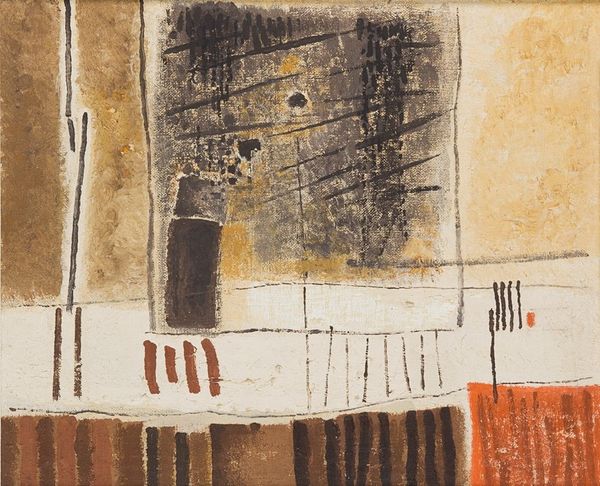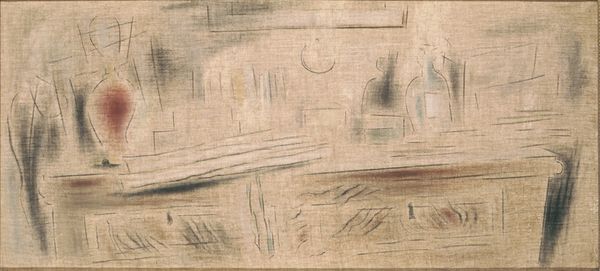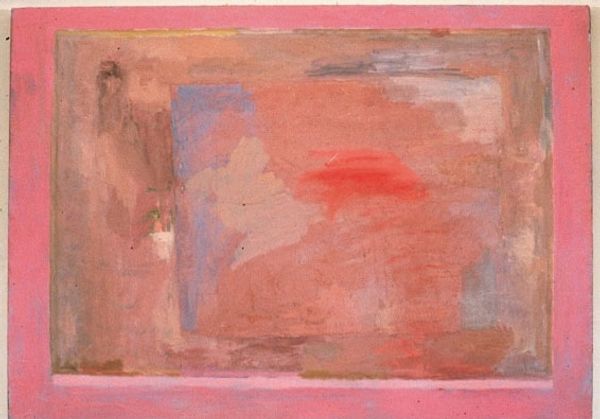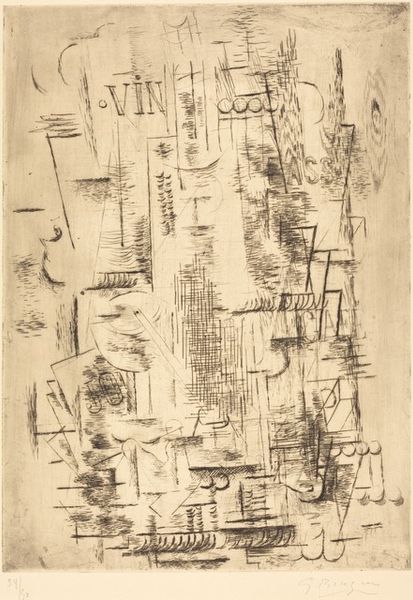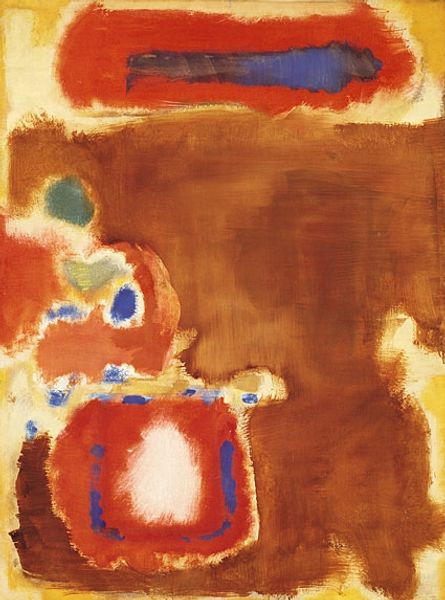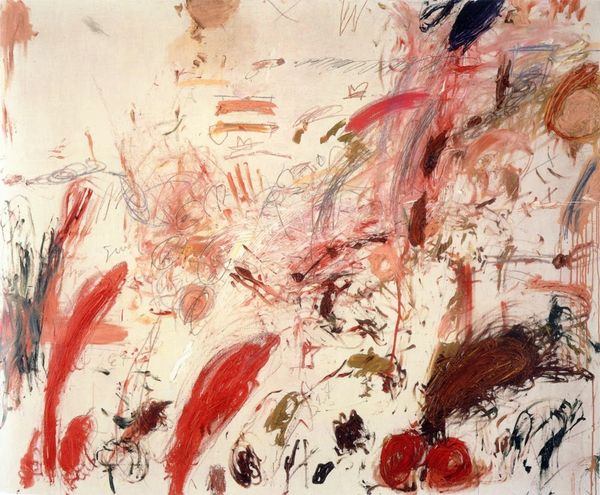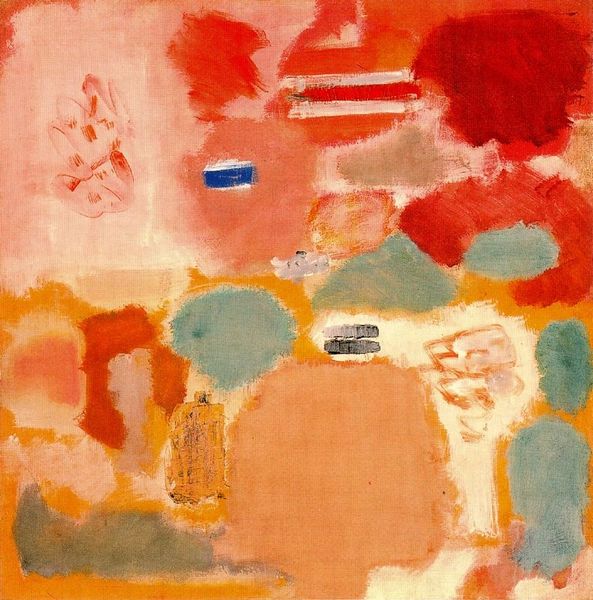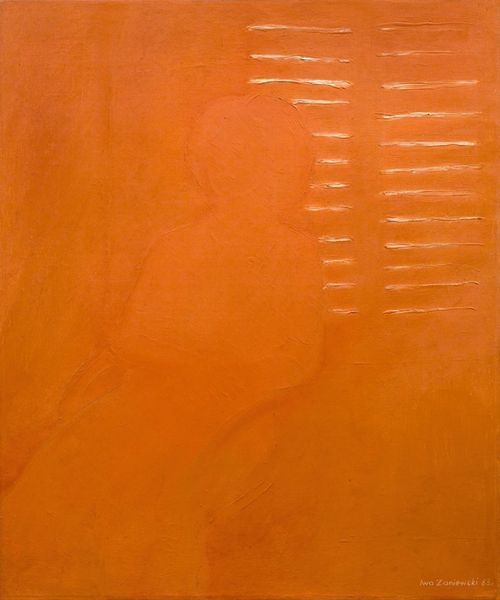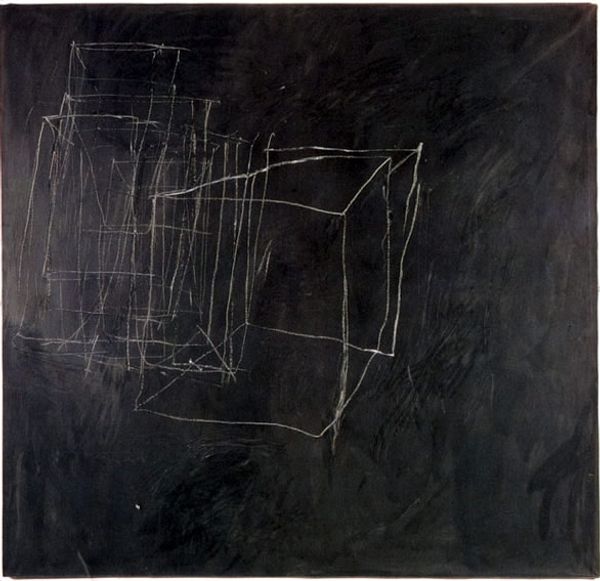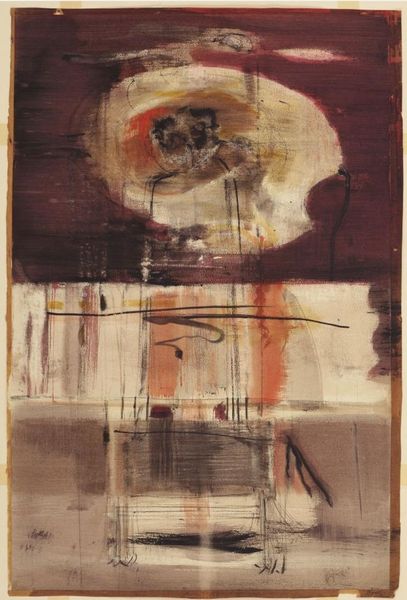
mixed-media, painting, acrylic-paint
#
abstract-expressionism
#
mixed-media
#
painting
#
acrylic-paint
#
abstraction
#
line
#
modernism
#
watercolor
Copyright: Bice Lazzari,Fair Use
Editor: Bice Lazzari’s "Racconto n. 2," from 1955, is a mixed-media piece, I believe using acrylic and maybe watercolor. It's so subtle, with soft colors and delicate lines. It makes me think of a faded memory, or a half-erased architectural plan. What strikes you about this piece? Curator: What I find particularly compelling is how Lazzari navigates the post-war landscape through abstraction. In the context of the 1950s, particularly in Europe, abstraction served as a visual language to process trauma and rebuild a sense of order. Do you notice how the seemingly random lines and geometric shapes create a subtle underlying structure, almost a ghost of urban planning? Editor: I do, now that you mention it! It’s like she’s hinting at something beneath the surface. But was abstract art like this generally well-received, or was it considered too… disconnected? Curator: That's a critical question. Abstract art's reception was complex, deeply intertwined with politics and ideology. While some saw it as a universal language of progress and freedom, others criticized it as elitist and detached from social realities. Museums and galleries played a vital role in shaping these perceptions, either championing or marginalizing artists like Lazzari. Her subtle use of color, those almost whispered lines – it could be seen as a quiet act of resistance against more bombastic, masculine expressions of abstraction that were prevalent at the time. Editor: So the very act of creating something so quiet was making a statement. I hadn’t thought of it that way. Curator: Exactly! It compels us to consider the power dynamics within the art world itself – who gets to speak, and how loudly. It's work like this, upon further examination, that shows just how complex post-war Italian art truly was, when it may initially appear deceptively sparse. Editor: I'll definitely be paying more attention to those undercurrents now! Curator: As will I. This reminds me of the important and multifaceted relationship between visual work and its historical reception.
Comments
No comments
Be the first to comment and join the conversation on the ultimate creative platform.
